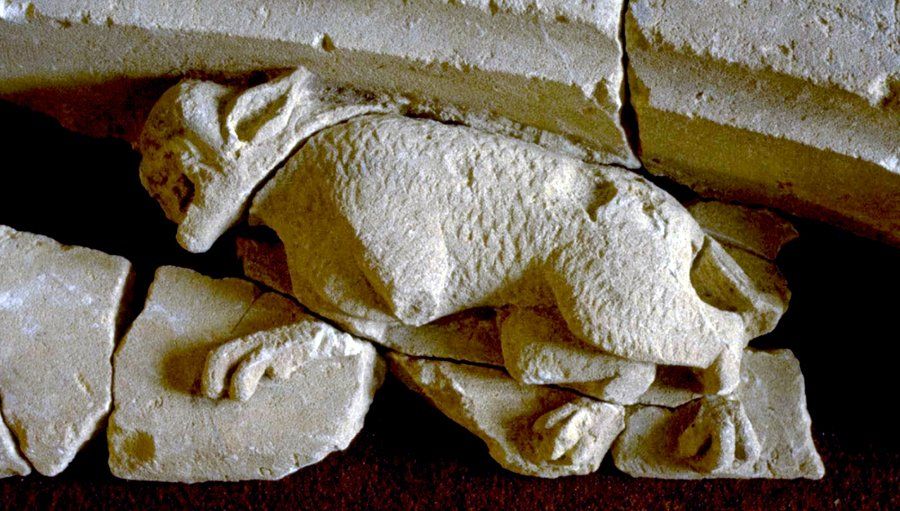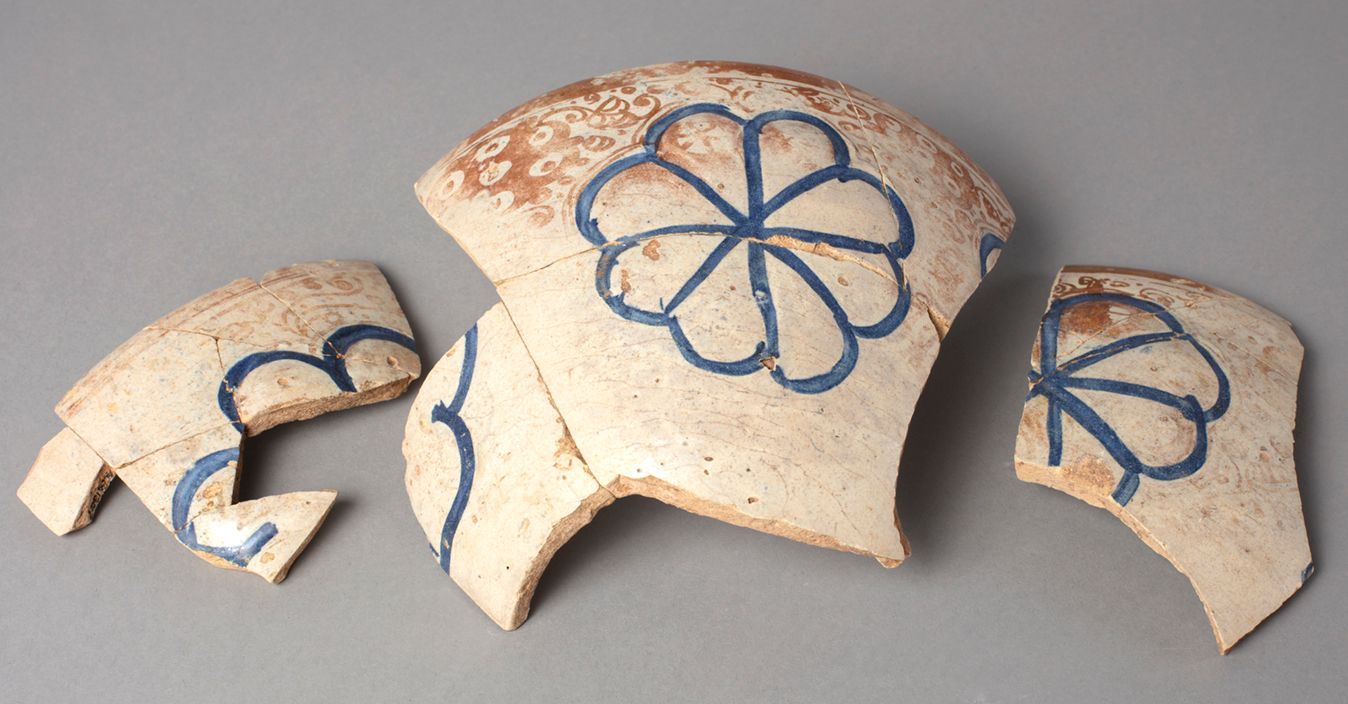Archaeology
Without the discipline of archaeology, not a great deal would be known of the history and development of Acton Court. Although documents exist in archives about the early owners, the de Acton’s and Poyntz families, and subsequent farming tenants, very little has been recorded of how they lived at Acton Court and the ways in which the house and grounds were developed to respond to their changing needs. Prior to Acton Court’s rescue in the 1980s, no part of the 13th-15th century manor house remained standing, except the mostly buried wall footings, and although a royal progress visit by Henry VIII and Anne Boleyn was known of, none of the surviving buildings were believed to have dated from the period. In the process of clearing large quantities of rubbish and scrap metal, which had accumulated around the house, a limestone sundial was found. The apparent significance of this sundial and its early date prompted a reappraisal of the site. English Heritage recognised Acton Court’s historical importance and took the unusual step of purchasing the house.
Once emergency works to stabilise the building were undertaken, detailed recording and analysis of the fabric by Kirsty Rodwell, survey of the site and earthworks by Rob Iles and MJ Rees & Co Ltd, and excavation by Robert Bell of the Bath Archaeological Trust were carried out. The aim was to recover the plan of the demolished parts of the Tudor mansion, to record evidence of earlier buildings on the site and their relationship to the existing house, and to locate a formal garden, which was implied by the presence of the sundial. The excavations were carried out over three twelve-week seasons between autumn of 1986 and the summer of 1988. During the first season the former west range and chapel were located. In 1987 the chapel, the central part of the south range and the demolished part of the north range were excavated, as well as a section of the moat, the east court and areas to the south and north. Following a geophysical survey of the field to the north of the house, further trenches were excavated to date and interpret the visible earthworks. During the third season the rest of the south range of the house was investigated, along with the south porch and part of the inner courtyard. Further excavations were carried out in 1993, 1996 and finally 1997, prior to the creation of the car park. Only limited parts of the house interior were excavated, in advance of building works, in order not to damage the existing stone floors.
The collection of excavated finds, now held at Bristol Museum, has also been critical in unraveling the story of Acton Court; providing a glimpse into the lives of those that lived, worked and visited the house over the years. The stone sundial, designed by English renaissance figure Nicholas Kratzer, is both symbolic, prompting the house’s ‘rescue’, and of international interest. The rest of the collection includes approx. 1500 medieval floor tiles, c.400 pieces of structural stonework, c.1500 glass fragments and lead cames, a large group of decorative plasterwork fragments, a significant collection of early and later medieval pottery, an exceptional quantity of imported pottery from the low countries, France, Italy, Spain and Portugal, English and Mediterranean vessel glass, c.100 clay tobacco pipes, c.150 coins, jettons and tokens, two wooden staves attributed as a childrens’ longbows, over 2000 vertebrate remains, and plant and animal macro-fossils.
Despite the extensive investigation, gaps remain in our understanding of the site; was there any kind of settlement or house before the mid-13th century? Where and what were the extent of agricultural buildings, associated with the medieval and Tudor houses? However, a significant story did emerge; an understanding of the evolution of this highly important early Tudor courtier’s house, with its formal garden, fishponds and deer parks, and beyond to its conversion to a farmhouse and working farm. Acton Court’s archaeology remains of exceptional interest, reflected by its continued designation as a nationally important archaeological site and scheduled ancient monument.
Nicholas Ellis
Heritage Adviser at Acton Court








